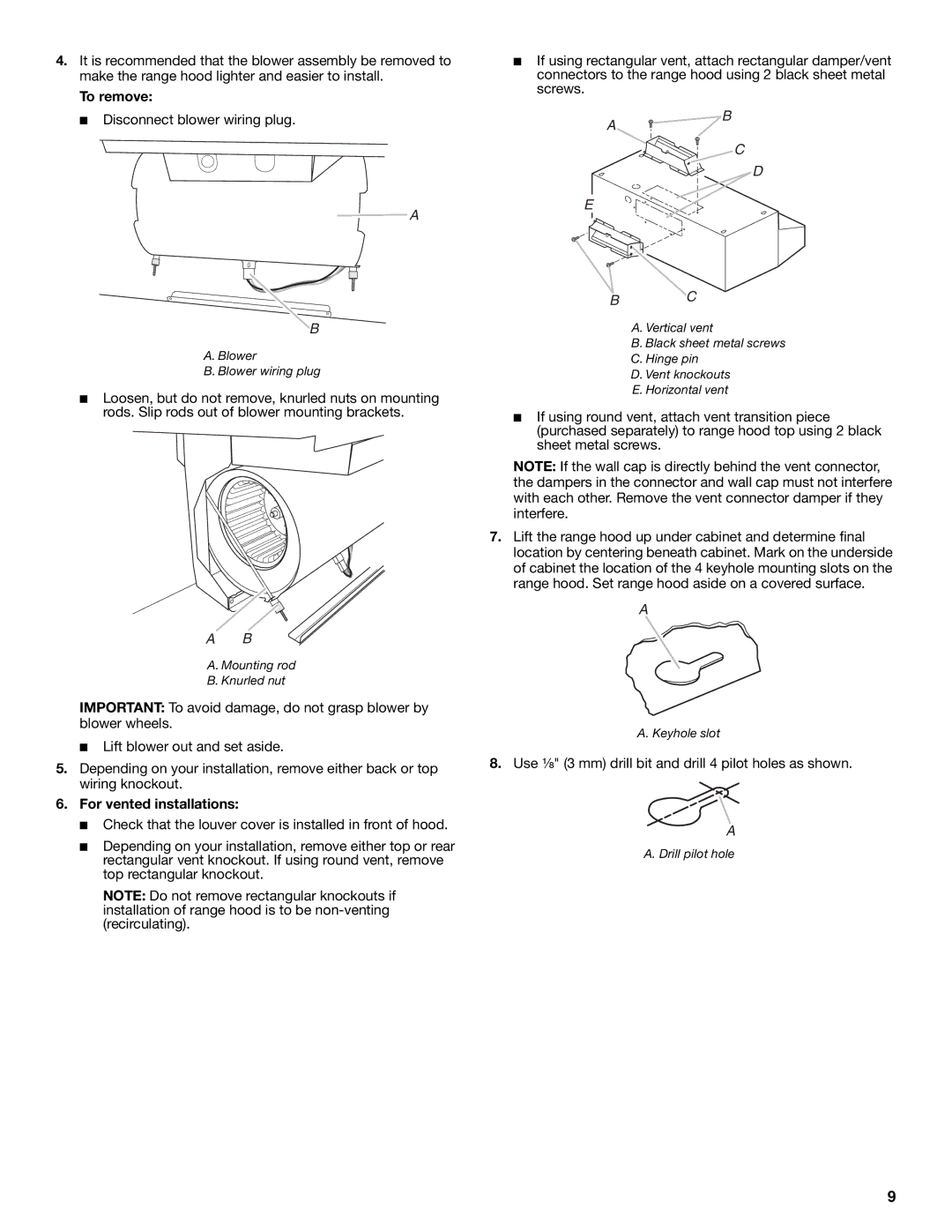99044506A, W10240582A specifications
The Whirlpool W10240582A and 99044506A represent two key components in home appliance functionality, as they are essential parts for Whirlpool refrigerators. These models are designed to enhance the efficiency and performance of your appliance, ensuring that your food and beverages remain fresh and properly stored.One of the main features of both models is their compatibility with a wide range of Whirlpool refrigerator models, making them versatile components for consumers. This adaptability allows homeowners to easily replace old or malfunctioning parts without needing to purchase a completely new unit, ultimately saving time and money.
The W10240582A is known for its high-quality construction, which emphasizes durability and longevity. This part is often an essential component in the ice-making function of the refrigerator. By providing efficient ice production, the W10240582A ensures that users have a constant supply of ice for cooling beverages, making it an ideal choice for families and social gatherings.
On the other hand, the 99044506A is designed to optimize temperature control within the refrigerator. It serves as a thermostat, ensuring that the appliance maintains the ideal cooling temperature for food preservation. This technology is crucial not only for preventing food spoilage but also for energy efficiency, as a well-regulated cooling system uses less power, contributing to lower utility bills.
Both models showcase Whirlpool's commitment to innovation and user-friendliness. They are designed for easy installation, allowing even those with minimal technical skills to replace them without professional help. The clear instructions provided with these parts further simplify the process, making it accessible for the average homeowner.
In terms of characteristics, the W10240582A and 99044506A are both backed by Whirlpool's reputation for quality. They are engineered to meet rigorous safety and performance standards, ensuring reliable operation over time. Additionally, these components often come with warranty options, reflecting the brand’s confidence in their longevity and performance.
Overall, the Whirlpool W10240582A and 99044506A serve as excellent examples of how replacement parts can significantly enhance the functionality of household appliances. With their advanced features and compatibility, they play a vital role in maintaining the efficiency and effectiveness of Whirlpool refrigerators.

